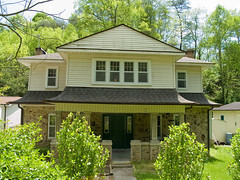Suppose you buy a valuable piece of art for $15,000. Further suppose that a month later a major economic slowdown occurs and as a result, the amount of money art buyers are paying drops substantially. Perhaps today, if you wanted to sell the art, you might be able to sell the painting for $10,000. If you intended to sell the painting, what would you do? Most likely, you would try to wait for the market to correct and try to recoup the initial investment. You aren’t motivated to sell the piece of art. It’s not costing you anything not to sell it, so why not hang on to it.
But what if you bought that piece of art on credit? Even at a relatively good interest rate of 5 percent, you would still be losing over $60 a month in interest and spending about $300 per month in total payments. Having that piece of art costs you money every month. In this case, you are much more motivated to sell the art for $10,000.
However, what if you had a credit card that carried zero interest (or in the range of 0 to 0.25%) and if you can borrow money on that card at will without fees. In this case, you are not losing substantial money to interest and you can borrow more money whenever cash flow gets tight. In this case, your debt no longer pressures you to move the problem forward. Although the market has priced your painting at $10,000, you are behaving as if it is still worth $15,000. You are arguably denying or deferring reality.
Now I don’t think there is anything particularly wrong with this delusion. Everyone can bury their head in the sand, but these people should be penalized to clinging to delusions. But these days, banks do not feel the pinch.
In a market correction, asset holders need to substantially mark down the price of their assets to get them sold. In a macroeconomic sense this is called “finding the bottom” where prices come down to a point where sufficient buyers are available to meet demand. Once the market finds its bottom, new growth occurs.
For years now, banks have reaped the benefits of policy based on monetary theory. After making loans to millions of people who couldn’t afford them, banks should have been suffering from huge cash flow issues due to the lack of payments and loss of principal on these assets. However, since banks can borrow money at will from the Federal Reserve at essentially no cost to them, banks have plenty of cash to meet their needs. Banks have little motivation to turn around their growing foreclosure inventories by reducing prices.
Because of this false support of overvalued properties, real estate property values continue to fall, not in a quick fashion, but a slow laborious multi-year fashion. When the correction could have taken a year or two, real estate values are still falling. Wise potential home buyers see this and are choosing not to buy. It is important to note that record low mortgage rates also played a huge role in driving home sale prices up. Home buyers realize that once interest prices do rise, there will be even more downward pressure on home prices.
These phenomena add up to one conclusion, sellers are hesitant to sell and buyers are hesitant to buy. Raising interest rates, though painful in the short term, may offer the best hope for escaping the economic holding pattern we’ve been in for years.



